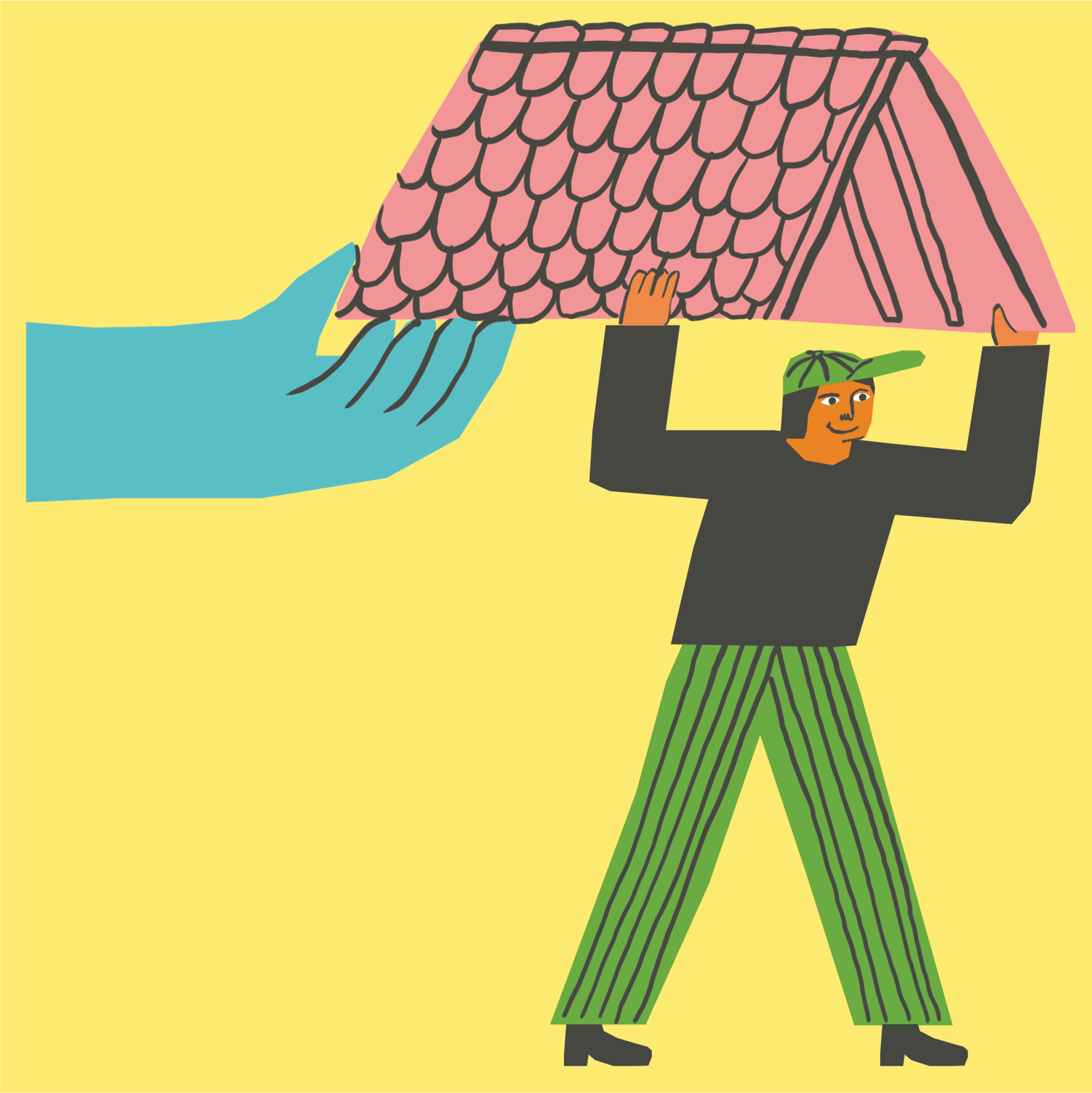"Our society determines whether neo-Nazis feel called to kill": How people experiencing homelessness become vulnerable to right wing violence
Interview by Alisa Müller
- News

As a marginalised group, people experiencing homelessness are disproportionately susceptible to violence at the hands of right-wing groups with an intolerant ideology. But how we as a society relate to homeless communities also plays a role in this, says political scientist Martin Stammler. He spoke to Nuremburg street paper Strassenkreuzer about the subject, Social Darwinism and how it turns to hatred and violence.
Strassenkreuzer: The sight of homeless people in general makes an impression. Many feel compassion, perhaps shame, or choose to ignore them. But some people also react with anger or hatred. Where does this come from?
Martin Stammler: The fact that we live in a capitalist society plays a role. To be able to achieve something oneself, to be able to earn one's own living, is the yardstick. Looking at others who cannot, or do not want to, do this can easily go hand in hand with devaluation: “That person is too lazy, lives at the expense of the state and thus also at my expense, because I pay taxes”, people may say.
One could also say: I am perhaps not quite as poor as you, but we should actually work together to ensure that wealth is better distributed. Instead, people often set themselves apart from those who are even poorer. Social Darwinism occurs most often in groups that live on the poverty line themselves.
What does Social Darwinism mean?
Darwinism comes from Charles Darwin, who developed the theory of evolution - the idea that the strongest prevail in evolutionary terms. Social Darwinism is - to put it simply - the application of the theory of evolution to the social structure of human beings. This means that anyone who cannot make it on their own, who is not strong enough on their own, does not deserve to live or survive in our world in dignity.
During the Covid-19 pandemic, there was prevalent thinking that “If people are going to die soon anyway, there's no need to take much care of them”. Has Social Darwinist thinking gained momentum?
This is not a new trend. This attitude has been systematically measured for over 20 years, every two years. We simply know that a certain percentage of the population, roughly between five and 20 per cent, completely or latently agree with Social Darwinist statements.
Social Darwinism is thus associated with an ideological devaluation of marginalised social groups. But how do these thoughts turn into hatred and violence?
First of all, the following always applies to politically motivated violence: Depending on how the social discourse proceeds, perpetrators feel more or less motivated to act. That means, for example: If it is normal in social discourse to devalue refugees, right-wing perpetrators get the feeling that if they use violence, they are actually doing something that the silent majority wants. They feel motivated and instructed to act accordingly.

Photo: Maria Bayer | mariabayer.de
And that is also the case with violence against homeless people?
It didn't stop after the Nazi era with state discrimination against homeless people. In the German Democratic Republic, we actually had the possibility until 1990 that homeless people could simply be locked up because they "disturbed public order". In West Germany, this was possible until 1969, in principle with the same justification. And today it is still the case, for example when walking through main railway stations, that policemen or security guards expel people. When you see this again and again, it reinforces the image that homeless people are worth less, that they shouldn't be here. And that can lead to people becoming more unrestrained, insulting themselves and saying: Get out of here.
Is that the only motivation?
It is also part of it to have the possibility to exercise violence in a group with others. What happened in East Germany in the 90s - the so-called ‘baseball bat years’ - was massive violence by right-wing groups against all people who didn't fit into their world view. They actually went on a hunt, arranged meetings, listened to neo-Nazi music that incited violence, drank beer, and then went out. Some murders of homeless people have also arisen from such situations. It also plays a role that homeless people are really not protected. They have no lobby or representatives, and are naturally an easy target when they sleep on a park bench somewhere at night.
Violence and devaluation in numbers
If we look at violence against homeless people in general, are political motives the most important reason?
Rather not. In a 2017 evaluation by the Federal Working Group on Assistance for the Homeless, 55 per cent of homicides were committed by other homeless people. This also means that 45 per cent were committed by non-homeless perpetrators. In the case of assault, the share of perpetrators from non-homeless contexts is even higher. And "prejudice-related motives" often play a role in these violent acts. It is not possible to be more precise.
Is the motivation not asked in court?
Especially in the 90s and 2000s, it was often clear in court that the perpetrators were clearly part of the right-wing extremist milieu. They may even have made corresponding statements, but this was rarely examined in depth and then punished. In the end, it was said that it was a quarrel about alcohol, cigarettes or money. Fortunately, a change in thinking is slowly taking place, also with other right-wing extremist motives for crimes such as racism or violence against the LGBTQ+ community. The ideological motive is more often recognised.

Photo: Maria Bayer | mariabayer.de
When you see state discrimination again and again, it reinforces the image that homeless people are worth less, that they shouldn't be here. And that can lead to people becoming more unrestrained, insulting themselves and saying: 'Get out of here'.
How did this come about?
Ultimately through pressure from civil society. Victims' associations, relatives, but also educational institutions and NGOs that record right-wing extremist acts have repeatedly said: The state authorities are blind to this. The fact that this has been repeated to the public has contributed a lot to the fact that there is now more sensitivity.
That actually gives us hope.
Definitely. I believe that it is still important to remember such cases. Even though there have been no right-wing killings of homeless people in Nuremberg in recent years, they can happen at any time. It is simply important to see that this danger is there and where it comes from. It is not simply neo-Nazis who have this world view, completely isolated from society. But how our society deals with homeless people has an influence on whether neo-Nazis feel called to kill.
Martin Stammler is a political scientist who works for the Academy Caritas-Pirckheimer-Haus, Nuremberg. He organises educational events, among other things, in the Centre of Excellence for Democracy and Human Dignity, for example on remembrance work and right-wing extremism.
Translated from German by Lisa Luginbuhl
Support our News Service
We believe journalism can change lives, perceptions, and society - underpinning democracy for a more equitable world. Learn more about the INSP News Service and how to support it here.


